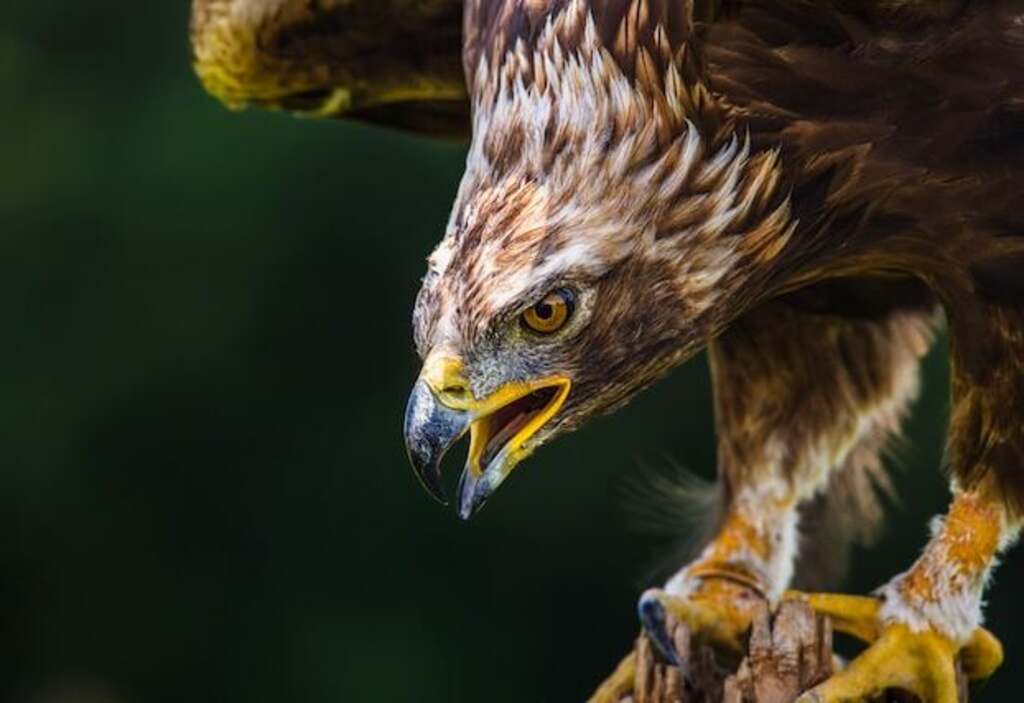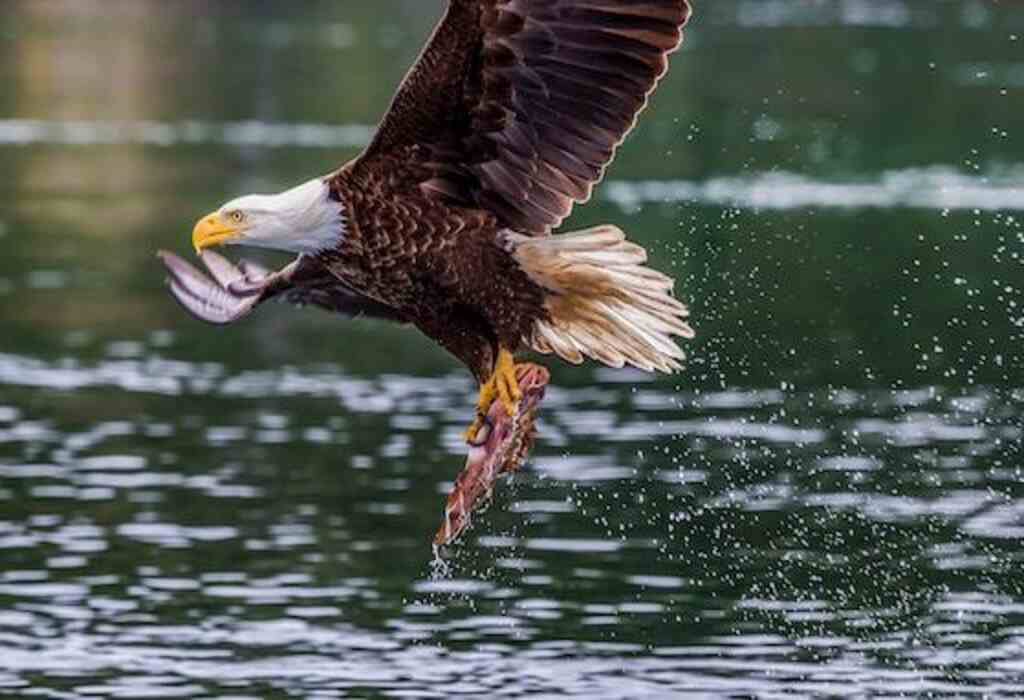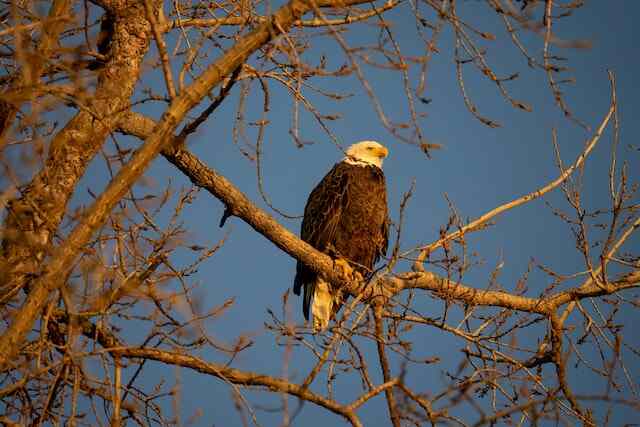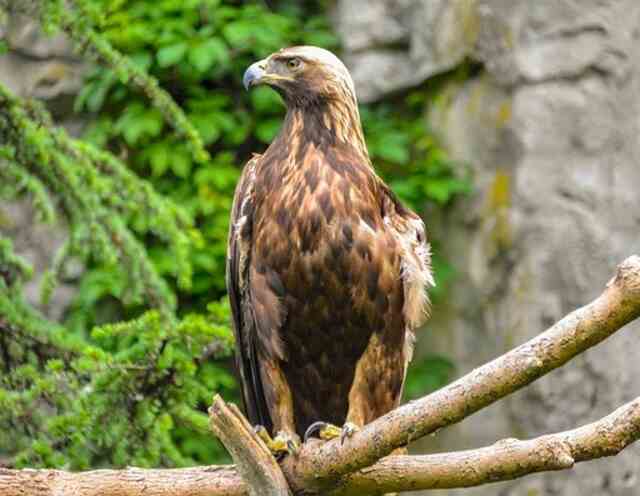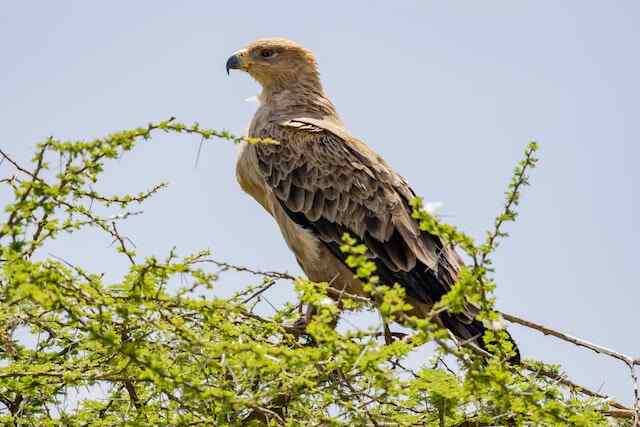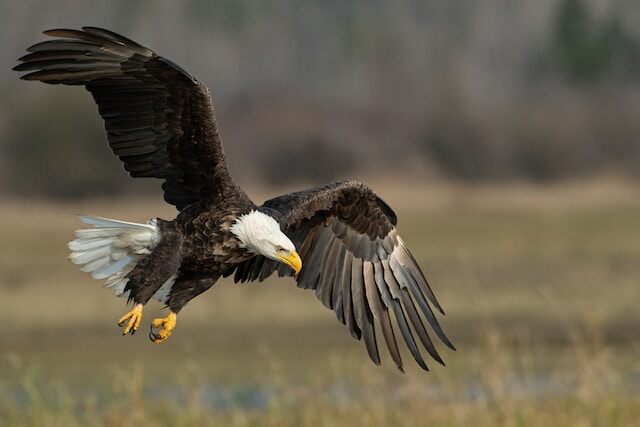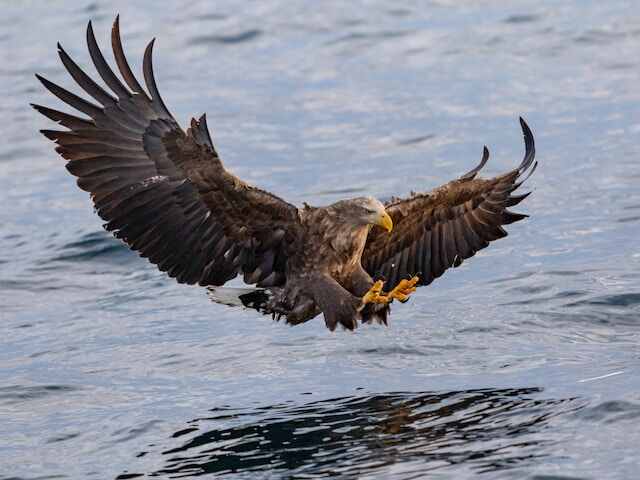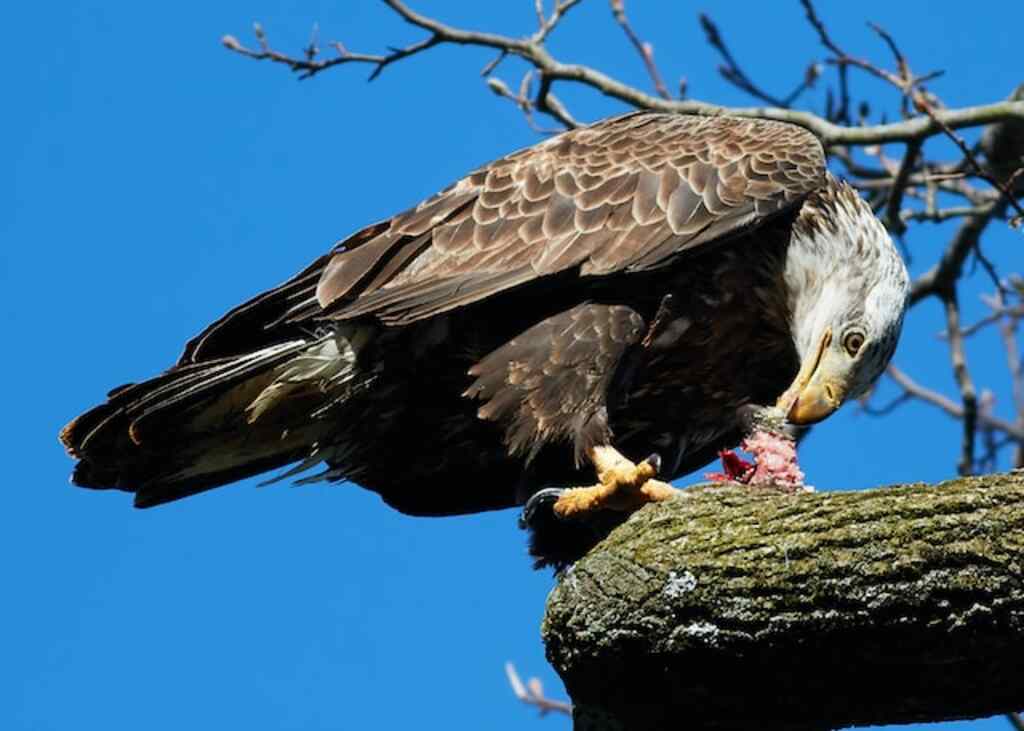In the world of ornithology, the term ‘raptor’ is used to describe a group of birds that are characterized by their exceptional hunting abilities and sharp talons.
These birds of prey are renowned for their incredible agility and keen senses, making them some of the most formidable hunters in the animal kingdom.
Among these birds, eagles are some of the most iconic and majestic, with their impressive wingspans and piercing gaze.
Despite their popularity, there is still some confusion among the general public about the classification of eagles as raptors.
Are Eagles Raptors? Let’s delve into the scientific definition of raptors, explore the unique characteristics of eagles, and examine how they fit into the larger category of birds of prey.
By the end of this article, you will have a better understanding of the complex and fascinating world of these incredible birds, revealing the classification intricacies and shedding light on the true nature of eagles as remarkable raptors.
Table of Contents
- 1 Key Takeaways
- 2 Are Eagles Raptors
- 3 Defining Raptors
- 4 Understanding Eagles
- 5 Comparing Eagles to Other Raptors
- 6 The Hunting Habits of Eagles
- 7 The Physical Characteristics of Eagles
- 8 The Life Cycle of Eagles
- 9 The Role of Eagles in Human Culture
- 10 Threats to Eagle Populations
- 11 Conservation Efforts for Eagles
- 12 The Importance of Raptors and Eagles in Our Ecosystem
- 13 Frequently Asked Questions
- 14 Conclusion
- 15 Author
Key Takeaways
- Eagles are a type of raptor, which is a group of birds of prey with exceptional hunting abilities and sharp talons.
- Eagles are classified under the Accipitriformes group of raptors and are one of the most iconic and majestic raptors with a wingspan that can reach up to 7 feet.
- Eagles have a keen sense of sight that enables them to spot prey from a distance of 2 miles away, and are apex predators that play a crucial role in maintaining the balance of the food chain in their ecosystems.
- Eagles have physical differences from other raptors such as hawks and falcons, with broader and more powerful wings that allow them to hunt a variety of prey, including fish, birds, and small mammals.
Are Eagles Raptors
Yes, eagles are indeed raptors. The term ‘raptor‘ refers to birds of prey characterized by exceptional hunting skills and sharp talons. Eagles, with their impressive wingspans and keen senses, fit this description perfectly.
They are majestic birds and prominent members of the raptor family, showcasing remarkable hunting abilities and embodying the essence of these formidable predators.
Defining Raptors
In ornithology, the term ‘raptor’ refers to birds of prey characterized by sharp talons, hooked beaks, and keen eyesight, which includes eagles, hawks, falcons, and owls.
Raptors are classified into two major groups: Accipitriformes and Falconiformes, with the former including eagles, hawks, and vultures, and the latter comprising falcons and caracaras.
Raptors evolved from non-predatory birds, with the earliest raptors appearing in the Cretaceous period.
They are known for their extraordinary hunting skills and are at the top of the food chain in most ecosystems.
Understanding eagles, which are also a type of raptor, requires an in-depth knowledge of raptor classification and evolution.
Understanding Eagles
Through their powerful wingspan and sharp talons, these majestic birds of prey have developed a reputation as dominant hunters in the animal kingdom.
Understanding eagle behavior can help us appreciate the significance of these birds in the ecosystem, as well as highlight the importance of eagle conservation efforts.
Here are a few fascinating facts about eagles that make them stand out among other raptors:
- Eagles have a wingspan that can reach up to 7 feet, which allows them to soar high in the sky and cover great distances.
- They have a keen sense of sight that enables them to spot prey from a distance of 2 miles away, making them formidable hunters.
- Eagles are monogamous and mate for life, and they often return to the same nest year after year to breed.
- These birds are apex predators that play a crucial role in maintaining the balance of the food chain in their respective ecosystems.
Understanding these facts about eagles can help us appreciate their importance in the animal kingdom. Additionally, with conservation efforts in place, we can ensure that future generations get to witness the majesty of these birds.
Comparing eagles to other raptors allows us to recognize the unique characteristics of each species and their respective roles in the ecosystem.
Comparing Eagles to Other Raptors
Comparing eagles to other raptors is essential to understanding the characteristics that distinguish them from their relatives.
Eagles are often confused with hawks, falcons, and owls due to their similar physical features and predatory behavior.
However, there are significant differences between them in terms of size, shape, hunting techniques, and habitat preferences.
A comparative analysis of these raptor species can provide insights into their ecological roles and evolutionary adaptations.
Differences Between Eagles and Hawks
One way to distinguish between eagles and hawks is by examining the shape and size of their wings, as eagles generally have broader and more powerful wings while hawks have narrower and more agile wings.
Eagles are larger than hawks and have a wingspan that can range from six to eight feet, compared to hawks, which have a wingspan between two and four feet.
Eagles are also known for their hunting behavior of soaring high above their prey before diving to catch them, while hawks are more agile and hunt by chasing their prey through trees and bushes.
In terms of habitat preferences, eagles tend to prefer open areas near water sources such as rivers and lakes, while hawks prefer forests and wooded areas.
When it comes to prey preferences, eagles are known for hunting larger prey such as fish, rabbits, and even deer, while hawks hunt smaller prey such as rodents, snakes, and insects.
These differences in size, behavior, habitat, and prey preferences set eagles and hawks apart from each other.
Moving on to the next subtopic, let’s explore the differences between eagles and falcons.
Differences Between Eagles and Falcons
The distinguishing characteristics between falcons and other birds of prey are notable, particularly when comparing them to eagles.
Physical differences include the size and shape of their wings, with falcons having longer and more pointed wings suited for high-speed aerial maneuvers.
Hunting behaviors also differ, with falcons preferring to hunt smaller prey in flight, while eagles tend to hunt larger prey on the ground or from perches.
Habitat preferences also vary, with falcons often found in open areas such as grasslands and deserts, while eagles prefer forested areas near bodies of water.
In terms of migration patterns, falcons tend to migrate farther distances than eagles, with some species traveling from the Arctic to South America.
These differences highlight the unique adaptations and behaviors of both birds of prey.
Moving forward to the next subtopic on differences between eagles and owls, it is important to note the distinct characteristics of each species in order to better understand their ecological roles and behaviors.
Differences Between Eagles and Owls
Distinguishing the characteristics of owls and eagles can provide insight into their ecological roles and behaviors. While both birds of prey are skilled hunters, they differ in dietary preferences and geographical distribution.
Owls are nocturnal and primarily hunt small mammals, such as rodents and rabbits, while eagles are diurnal and hunt a variety of prey, including fish, birds, and small mammals.
Additionally, owls are found worldwide, with some species living in forests, deserts, and even the Arctic, while eagles are more abundant in open habitats, such as grasslands and savannas.
Understanding these differences can help us better appreciate the unique adaptations and ecological niches of these majestic birds.
Moving forward, exploring the hunting habits of eagles can shed further light on their ecological roles and behaviors.
The Hunting Habits of Eagles
Eagles possess a keen sense of vision, allowing them to spot prey from great distances and swoop down to catch it in their talons.
They are opportunistic hunters and will prey on a variety of animals, including fish, small mammals, and birds. Some eagles, such as the bald eagle, will even scavenge for carrion.
Their hunting techniques vary depending on the type of prey they are after. For example, eagles that hunt fish will fly over bodies of water and use their sharp talons to pluck the fish out of the water.
Eagles also use their strong wings to create a draft that can help them gain altitude and catch thermals, which they can ride for miles as they search for prey.
Additionally, eagles are known for their impressive migration patterns and seasonal changes in hunting habits.
Some species, such as the bald eagle, will migrate to warmer climates during the winter months, where they can find more abundant prey.
As an audience with a subconscious desire for freedom, we can appreciate the eagle’s ability to adapt and thrive in different environments.
With this in mind, it is important to note that the physical characteristics of eagles also play a significant role in their hunting and survival strategies.
The Physical Characteristics of Eagles
With a wingspan that can reach up to 7 feet, these birds of prey have a remarkable ability to soar through the skies. Eagles possess several physical adaptations that enable them to hunt effectively.
Their sharp talons and beaks are designed to capture and tear apart their prey, while their keen eyesight allows them to spot even the slightest movements from great distances.
Additionally, eagles have a unique respiratory system that enables them to regulate their body temperature and maintain high levels of energy during long flights.
These hunting strategies and physical characteristics make eagles one of the most successful predators in the animal kingdom.
As we delve deeper into the life cycle of eagles, we will explore how these adaptations and hunting strategies play a crucial role in their survival.
The Life Cycle of Eagles
During the early stages of their life cycle, these birds of prey begin as small, helpless hatchlings nestled in their parents’ nests high atop trees or cliffs.
As they grow, their parents provide them with food, shelter, and protection until they are ready to leave the nest and fend for themselves.
Once they reach maturity, eagles engage in elaborate courtship rituals before selecting a mate and building their own nests.
Eagle conservation efforts often focus on protecting these nesting sites, as eagles are known to return to the same location year after year.
The nests themselves are impressive structures, built from sticks and lined with soft materials like moss and feathers.
As eagles continue to play a vital role in our ecosystem, understanding their nesting behavior and supporting conservation efforts is crucial.
With their majestic wingspans and fierce independence, eagles have captured the imagination of humans for centuries.
In the next section, we will explore the role of eagles in human culture and their enduring appeal.
The Role of Eagles in Human Culture
The cultural significance of these majestic birds of prey has been documented throughout history, with depictions found in artwork, literature, symbolism and mythology. In various mythologies, eagles have been associated with power, courage, and freedom.
In Greek mythology, the eagle was the emblem of Zeus, the king of gods, representing his supreme power and strength.
Similarly, Native American cultures revered eagles as sacred animals, symbolizing wisdom, spirituality, and the connection between earth and sky.
In modern art, eagles continue to be a popular subject, with their powerful wings and piercing eyes captivating artists and viewers alike.
The eagle’s cultural significance has also led to its use as a national symbol in many countries, including the United States, where the bald eagle is the national bird and a symbol of freedom and independence.
However, despite their cultural importance and protected status, eagle populations face numerous threats, including habitat loss, pollution, and hunting.
Threats to Eagle Populations
Eagles are facing a range of threats that are affecting their populations worldwide.
Habitat loss and fragmentation, caused by deforestation, urbanization, and agricultural practices, are among the main factors that are limiting the availability of suitable habitats for these birds.
Human activities, such as hunting, poaching, and disturbance, are also contributing to the decline of eagle populations, as well as pollution from industrial and agricultural sources.
Finally, climate change and other environmental factors, such as natural disasters, disease outbreaks, and invasive species, are posing additional challenges for eagle conservation and management.
Habitat Loss and Fragmentation
Habitat loss and fragmentation present significant challenges for the conservation of populations of raptors such as eagles. The following five points provide a snapshot of the gravity of the situation:
- Urbanization and agricultural expansion have resulted in the loss of natural habitats for eagles.
- Fragmentation of habitats due to human actions has made it difficult for eagles to move between different parts of their range, leading to isolation and reduced genetic diversity.
- The construction of power lines and wind turbines in eagle habitats has caused significant mortality due to electrocution and collision with these structures.
- The use of pesticides and herbicides in agriculture has resulted in the contamination of prey species consumed by eagles, leading to reproductive failure and mortality.
- Climate change is causing shifts in the distribution of prey species, which in turn affects the distribution of eagles.
Addressing habitat loss and fragmentation in raptor conservation requires a multi-faceted approach that recognizes the complex interplay between human activities and the environment.
The next section will explore the impact of human activities and pollution on eagle populations.
Human Activities and Pollution
Human activities and pollution have significantly impacted the survival of various bird species, including those that are dependent on aquatic ecosystems. Eagles, as raptors, are not exempt from these negative effects.
The increasing levels of pollution in the environment have led to the accumulation of toxins in the bodies of these majestic birds, which can have devastating impacts on their health and reproduction.
Moreover, the extensive use of plastics has led to an increase in plastic waste in the environment, which can cause entanglement and ingestion, both of which can be fatal to eagles.
To mitigate these impacts, reducing emissions from various human activities and promoting sustainable waste management practices are essential.
Additionally, it is crucial to raise awareness among the general public about the impact of plastic on wildlife and the environment.
As we move into the next section about climate change and other environmental factors, it is important to note that the negative impacts of human activities and pollution on eagles must be addressed in conjunction with other factors affecting their survival.
Climate Change and Other Environmental Factors
The impact of climate change and other environmental factors on the survival of various bird species, including those that inhabit aquatic ecosystems, has become a significant concern in recent years.
Effects of pollution on bird populations have been well-documented, as pollutants can accumulate in the food chain and cause harm to both adults and their offspring.
In addition, global warming has altered the timing of seasonal events, such as migration and breeding, which can have negative consequences for birds.
However, some bird species have shown remarkable adaptation strategies, such as changing their foraging habits or shifting their breeding ranges, in response to environmental changes.
Conservation approaches, such as habitat protection and restoration, predator control, and captive breeding programs, have also been implemented to mitigate the negative effects of environmental factors on bird populations.
In the next section, we will discuss conservation efforts for eagles, one of the bird species that have been greatly impacted by human activities and environmental changes.
Conservation Efforts for Eagles
Conservation efforts for eagles aim to protect their habitat, promote breeding programs, and reintroduce them to areas where they have become extinct.
Protecting eagle habitat involves preserving areas where they live, breed, and hunt.
Breeding programs and reintroduction efforts aim to increase eagle populations by breeding them in captivity and releasing them into the wild.
Monitoring and research are essential in tracking eagle populations and understanding their behavior to inform conservation efforts.
These efforts are crucial in ensuring the long-term survival of eagles and maintaining ecological balance in their habitats.
Protecting Eagle Habitat
Preserving natural landscapes and minimizing human intervention is critical for maintaining the integrity of eagle habitats.
Protecting eagle habitat is one of the key conservation strategies implemented to safeguard the species.
This involves identifying and preserving critical breeding, nesting, and foraging sites, as well as minimizing disturbances from human activities such as logging, mining, and development.
Habitat protection efforts can also involve restoring damaged habitats and creating new ones to support the recovery of declining eagle populations.
Effective habitat protection requires collaboration between government agencies, private organizations, and local communities to ensure that conservation efforts are sustainable and effective.
By protecting eagle habitat, we can ensure that these majestic birds can thrive in their natural environments, contributing to the overall health and balance of our ecosystems.
As we transition to the subsequent section about breeding programs and reintroduction efforts, it is important to note that protecting eagle habitat is a critical first step in ensuring the long-term survival of the species.
Breeding Programs and Reintroduction Efforts
Effective management of captive breeding populations and reintroduction programs have been implemented as a means of restoring declining populations of eagles.
Breeding programs have been established to ensure genetic diversity and the production of healthy offspring for release into the wild.
Reintroduction efforts have been successful in increasing eagle populations in areas where they were once extinct.
The success of these programs can be seen through the increasing number of active and successful eagle nests in some regions.
These programs evoke hope in people, as they provide a way to preserve and restore a symbol of freedom and strength in our skies.
However, it is important to continue monitoring the success of these programs and conduct further research to ensure that reintroduced eagles are thriving in their new habitats.
Through ongoing research and management, we can continue to protect and enhance eagle populations, ensuring their survival for generations to come.
Monitoring and Research
Breeding programs and reintroduction efforts have played a crucial role in restoring eagle populations. However, monitoring and research are equally important to ensure the long-term sustainability of these programs.
The use of technology has revolutionized the way we monitor eagle populations, allowing us to track their movements, migration patterns, and behavior.
Citizen science has also played a significant role in monitoring eagle populations, with volunteers collecting data and contributing to our understanding of their behavior and ecology.
This information is critical in determining the success of reintroduction programs and guiding management strategies.
The importance of raptors and eagles in our ecosystem cannot be overstated, and monitoring and research are essential tools in ensuring their continued conservation.
The Importance of Raptors and Eagles in Our Ecosystem
The presence of raptors and eagles in our ecosystem plays a crucial role in maintaining a balanced food chain and controlling the populations of smaller prey species.
These predators are natural pest controllers, helping to keep rodent, insect, and other smaller animal populations in check.
By controlling the populations of these prey species, raptors and eagles help to prevent overgrazing and overpopulation, which can have devastating effects on the ecosystem as a whole.
Unfortunately, human activities such as habitat destruction, pollution, and hunting have had a significant impact on raptor populations.
It is essential that we take steps to protect these important birds and their habitats, so that they can continue to play their vital role in our ecosystem.
Frequently Asked Questions
What is the difference between eagles and other birds of prey?
It is amusing to consider the difference between eagles and other birds of prey, given their shared anatomical features and hunting behavior. Eagles possess powerful talons, a sharp beak, and keen eyesight, which allow them to hunt efficiently and effectively.
How many species of eagles are there in the world?
There are approximately 60 species of eagles found throughout the world, each with its own unique habitat requirements. However, many eagle populations are threatened by habitat loss, hunting, and pollution, highlighting the need for conservation efforts.
Why do eagles have such sharp talons?
Eagles have sharp talons due to their bird anatomy and hunting techniques. Their talons are used to catch and hold their prey while their beaks tear apart their catch. This adaptation allows them to survive in the wild.
Do eagles mate for life?
Eagles typically mate for life, with both parents participating in raising their young. Their lifespan varies by species, with some living up to 30 years. Breeding habits also vary, with some species nesting in the same location each year.
What is the economic impact of eagle conservation efforts?
Conservation strategies for eagles have had a positive economic impact on the tourism industry. Studies have shown that ecotourism centered around eagles generates revenue and creates jobs, making conservation efforts not only important for the environment but also for local communities.
Conclusion
In conclusion, raptors are a diverse group of birds that include eagles. Eagles are apex predators with unique hunting habits and physical characteristics that distinguish them from other raptors.
They play an important role in human culture and are revered for their power and grace. However, eagle populations face numerous threats, including habitat loss, hunting, and pollution.
Conservation efforts are crucial to ensure the survival of eagle populations.
One interesting statistic is that the bald eagle, a symbol of the United States, was once on the brink of extinction, with only 417 breeding pairs left in 1963.
Through conservation efforts, their population has since rebounded, with over 10,000 breeding pairs in the lower 48 states as of 2007.
This success story highlights the importance of conservation efforts for all raptors and their crucial role in maintaining a healthy ecosystem.

